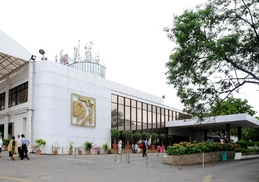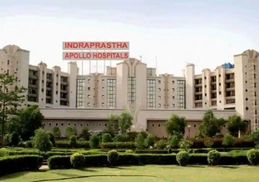
+91 8095511877

+91 8095511877
Multiple myeloma is a type of blood cancer. It affects a type of white blood cell called plasma cells, making them divide faster. Plasma cells help your immune system by making antibodies that destroy germs that cause various infections.
If you have multiple myeloma, the plasma cells divide into abnormal cells called ‘myeloma cells’. These cells divide so fast that they crowd out other blood cells in the bone marrow.
Also, these cells clump together to form tumors in the bones. These tumors are called plasmacytomas. You have multiple myeloma if you have these tumors in different parts of the body.
The risk of the disease increases with age. More than ninety percent of the patients are above the age of sixty. Men are slightly more at risk than women.
The disease has few early symptoms. Pain in the backbone or the ribs is a common sign. It is usually mistaken for other conditions making it difficult to detect the disease early. Mostly, the diagnosis happens in advanced stages when the disease has spread to other parts of the body.
The exact cause of multiple myeloma is not clear. Mutations in your genes that control the division of the plasma cells could be a reason.
Most of those with multiple myeloma have abnormalities in chromosome number 17, with parts of it missing. In such cases, the disease will be very aggressive and difficult to treat.
Dendritic cells in your bone marrow produce hormones like Interleukin-6(IL-6), which stimulate plasma cells to grow and divide. An increase in the level of this hormone may increase the number of plasma cells.
Risk factors are things that increase your risk of having a disease. Some of the common risk factors for multiple myeloma are
Bone pain is the most common early symptom of multiple myeloma. It happens due to the presence of the tumors in the bones. You will have pain in the back or on the ribs.
Most of the other symptoms of multiple myeloma occur due to a decrease in the number of red blood cells, platelets, and healthy white blood cells.
The common symptoms you will have are;
If you have multiple myeloma, you will have higher levels of calcium in your blood. Due to it, you may have the following symptoms.
In most persons, the symptoms usually occur only at an advanced stage.
If you have any of the symptoms and the doctor suspects multiple myeloma, you will have a few tests.
Blood tests- Blood tests will show an increase in the levels of calcium and proteins. There will also be a decrease in the levels of red blood cells, platelets, and healthy red blood cells. Higher levels of blood urea nitrogen(BUN) and creatinine point to problems with kidneys
Bone marrow tests- A bone marrow aspiration and biopsy will help to identify the presence of abnormal plasma cells.
X-rays, CT, and MRI scans- These help to detect problems with the bones.
Your treatment will depend on the intensity of your symptoms and the presence of complications. If you do not have symptoms, as in smoldering multiple myeloma, your doctor will watch the way the disease develops. Treatment will start when the symptoms start to show.
The goal of multiple myeloma treatment is to bring the disease into a remission phase. During remission, you will not have any symptoms of the disease. Treatments also aim to prolong these periods of remission.
Targeted therapy uses medicines to destroy cancer cells. These medicines specifically target some proteins and tissue factors that allow them to live longer. It may also target the genes that allow the cancer cells to multiply without control.
You will have the medicines as an injection through your veins. At, times you will have the medicines as pills.
You will have fewer side effects with targeted therapy as the medicines attack only the cancer cells and spare the normal ones.
It uses medicines that destroy cancer cells. You will have the medicines as pills or injections through the veins for a few days at a stretch. This period corresponds to a cycle. In between the cycles, you will have a few days of rest. It allows you to recover from the side effects.
The number of cycles you will have will depend on the stage of the disease and your response to treatment.
Some of the common side effects of chemotherapy are fatigue, tiredness, nausea, vomiting, hair loss, mouth ulcers, etc.
Immunotherapy stimulates your immune system and tunes it effectively to fight and destroy cancer cells. You will have drugs to boost the immune system. These drugs also help your immune system to identify the cancer cells more easily.
You will have medicines as injections through your veins. Immunotherapy has fewer side effects than chemotherapy. Some of the common ones are fever, chills, body pain, skin rashes, diarrhea, vomiting, loss of appetite, etc.
You will have radiation therapy to control the spread of the disease if it does not respond to chemotherapy. It also helps to give you relief from bone pain and other severe symptoms of bone damage. You may also have radiation before a bone marrow transplant to destroy the diseased bone marrow.
Radiation therapy uses high-energy rays and particles to destroy cancer cells. You will have the treatment in sessions that range from one to two minutes.
The treatment involves the removal of your diseased bone marrow portions and the transplantation of healthy bone marrow in its place. The surgeon will source the healthy bone marrow from your body (autologous transplant) or a donor(allogeneic transplant)
In multiple myeloma, your doctor will usually go for an autologous transplant. It helps improve the success as there will be no chance of rejection.
You will have chemotherapy or radiation to destroy the diseased bone marrow portions that produce myeloma cells. Your doctor will then infuse the healthy bone marrow with stem cells through a vein in the chest. These stem cells then move and occupy the space inside the large bones and produce normal blood cells.
A BMT allows you to have a long remission without any symptoms.
Early detection of multiple myeloma improves the response to the treatments. It also helps to prevent the spread of the disease to distant parts. Proper treatments can help to bring the disease into remission for long periods


This article has been reviewed for medical correctness and relevance by
Dr Niti Raizada
Dr. Niti Raizada is a senior Medical Oncologist with over fifteen years of experience in the field. Dr Niti has special interests in the areas of Thoracic, Gastrointestinal, Breast, Gynaecological Oncology, and Bone Marrow Transplants. She did her MBBS at Gandhi Medical College, Bhopal; MD-General Medicine at G R Medical College, Gwalior, DNB-General Medicine from National Board Of Examination,DM from Adyar Cancer Institute Chennai and Fellowship in Hematology from Hammersmith Hospital and Imperial College,London. She is a member of American Society of Clinical Oncology,USA; Royal College of Physicians,Edinburgh,UK; Member of Pharmacy Committee,Member of DNB teaching program in Medical Oncology and European Society of Medical Oncology (ESMO).

Aida Ismail
Australia

Apollo Chennai

Apollo Health City

Apollo Indraprastha

BLK Hospital

Fortis Bangalore

Fortis Memorial Research Institute(FMRI)
Frequently Asked Questions
What are the most common signs of multiple myeloma?
Can multiple myeloma be completely cured?
What is the best hospital to treat multiple myeloma in India?
How much does a bone marrow transplant cost in India?